| Zeitschrift Umělec 2003/1 >> Adventures in Musculature | Übersicht aller Ausgaben | ||||||||||||
|
|||||||||||||
Adventures in MusculatureZeitschrift Umělec 2003/101.01.2003 Jan Suk | muscles | en cs |
|||||||||||||
|
“Instead of interpreting art, we must love art.”
Susan Sontag Two years ago I saw a work by a Balkan artist, whose name I eventually forgot, a recording of his performance in a gallery where he lifted and pulled weights as a professional for a body-building session. The confrontation of him toning up his overly developed muscles in the space of the intellectually charged gallery made me think about the real essence of the understanding of the beautiful body. At the same time I was reading a book by Michael Taussig called Magic of the State, a book in which the terms “politic body” and the “body of politics” mingle and play a seminal role in the understanding of the body and rituals in South America. The contrast between the different concepts in both sources inspired me to write this article. Now, after having encountered the latest works of Pavel Doskočil, Czech sculptor and performer, I realized it was the ideal time to do it. The European and possibly American understanding of the beautiful body is mostly visual in nature, and fully hedonistic, which is why I will illustrate the fact using examples from what we call the western art tradition. The South American understanding of the perfect body, or the bodily quality in general, is seen in a different way: it is not an individual victory, but a certain collective “confluence” of body into the nature of the state. Pavel Doskočil in his upcoming solo exhibition maps the perfect body from the omniscient point of view. His “body metaphysical” strives to touch on the problem identity. Manly Man Generally speaking, muscles are necessary for movement and keeping the body together. The muscle mass is affected by the production of the hormone testosterone, which the male body produces more of. This is why we see manly men, or beef-cakes, more often than trichinous women. Also, the bodybuilding show has always been more of a manly matter. In western contemporary art it is interesting to note how the beautiful body functions pragmatically. Woman’s beauty and perfection, and man’s strength, might and immortality. The Guerilla Girls, an American art group from the mid-1980s, attempted to show how the understanding of man’s beauty is perceived differently in the case of males and females. The title Do women have to be naked to get into the Met. Museum? speaks for itself. To see a naked male in the gallery at that time was an exceptional occurrence. Female nakedness was a nakedness of gender, whereas a naked male represented purity and universality rather than sex. Physical appearance was judged accordingly in both cases, which means that it was a prime device in the case of women. In the case of man, perfection was a tougher case to prove. The phenomenon of the beautiful body is actually double-sided. On the one hand there is the traditional notion of health, power, might and security, along with a certain godliness (as an example of such treatment see the film Hercules in New York with Arnold Schwarzenegger, especially the scene of the encounter with the Hercules Show in which the polarity of the concepts of the muscle-bound man and the intellectual man is juxtaposed). On the other hand, there is always the new trend of adoring the either extremely skinny (a very contemporary vogue), or unfittingly fat male bodies (in Japan being fat is a sign of being modern and cool as the Japanese have a much lower natural tendency to be fat than those in western cultures). The European protest against the purely beautiful body began with modern art practices. With the outbreak of new forms of expressions, new themes were sought and found. As the root of art has been shaken considerably, so the author cannot completely trust art. Peter Wiebel, for instance, in Wiener Aktionisten demanded the presence of the body as the object of the art of a “politics of experience.” Not even his works attacked the taboos and repression of the collective and its systems. In Wiebel’s actions, the theme of the body developed its initial conceptual positions. In the case of Weibel (and Valia Export, for instance), the deconstructive analysis of the media always points towards the body as the phenomenon of socialization. Media Lung (1968) explores the artist’s body as the vehicle of a code under analysis. In this piece, a deer skin is confronted with the artist’s own skin and hair to create a strikingly simple and witty demonstration of the impossibility of the body remaining independent. The metaphor becomes a demonstration. A similar pattern echoes in Mark Wallinger’s photograph of wet back hair arranged in the style of a Vincent Van Gogh. This is the main attribute of the manly man, his hair, his belly and chest, his collectiveness. With the arrival of photography, realistic painting died, with the outbreak of new media, the classical art forms have become archaic — art becomes craft. It is the artists’ craftsmanship, 20th century craftsmanship, which is best paralleled in the bodybuilder striving for body perfection. Body Experience Bodybuilding, just like intellectual improvement, shows the attributes of personal growth, both spiritual and physical — a path towards perfection. To exercise is to become better. According to John Ruskin, the demand for perfection is always a sign of a misunderstanding of the ends of art. In his essay “The Stones of Venice,” Ruskin further warns that the artist must put on a mask of seeming selfishness to be able to fulfill the act of God, something he has been gifted with. The price is high for the divine gift. The artist is a medium for the seeds of God, and the surface selfishness is the only way to preserve the divine spark he was given to be able to give out what he is blessed with. The rush for perfection in bodybuilding, the confusion of anabolic drugs, the protein abuse, all of us seem very contemporary in sport as well as in real life. This muscular approach contradicts Ruskin. He goes on to say that imperfection is essential to all we know of life, it is a state of progress and change, a sign of life in a mortal body, and irregularity, defiance are the sources of beauty. To which we must add several artists’ attempts, such as Orlan’s equally self-destructive self-reconstructive cosmetic surgery in the 1990s, or Obsolete Body — a continuing number of projects by Stelarc, and the self-improving gestures of many other artists. One of the frequent uses of perfect bodies can be found in gay art. The handling of the body is different — slightly more careful and far more sensitive. Numerous paintings and drawings depicting the most beautiful in the male body is a one-sentence definition of the work of Tom of Finland (1920–1991). Isaac Newton’s seductive performances and films are other examples. His Looking for Langston (1990) is a series of performances in public spaces consisting of brief performances of stylized gay seductions by twenty performers in tuxedos at various places, and the appearance of a “gay angel” in the graveyard as the final tableaux. In the case of the perfect body there is always the immanent question of sexuality. When speaking about sexuality in art, millions of names may occur. At this point let me mention Marcel Duchamp above all, since the effort to encapsulate the erotic dimension runs throughout his entire oeuvre. In his manifold works, Duchamp constantly touches on the theme of pure love. The fourth dimension of Duchamp is the dimension of Love, a sublime eroticism. “None of our senses can be applied in the fourth dimension, except for touch, so the act of love as a tactile sublimation may enable us to glimpse, or to touch the physical interpretation of the fourth dimension,” wrote Chalupecký on Duchamp. This body experience is necessary for a further understanding of love, and what love may truly be. Androgyn: the metaphysical way out The metaphysicalness of manhood, or of loving, is best expressed in androgyns. The androgyn is a symbol of constant longing for the other, and at the same time for the same. It is an expression of unity, and of antagonism. In Jungian language we would say it is a symbol of the “Complete Self.” Anrogyn is the most basic element of hermetics, both macrocosm and microcosm. It expresses both sexuality and asexuality. Androgyns are the most ideal, yet the weakest beings. Androgyns were leitmotifs in the work of Henry Darger (1892–1972). His lifetime genius nomadic l’art brut-like drawings, paintings and writings mirrored the constant struggle for the unwanted yet desired. Suffering turned Darger, an ordinary man, into an extraordinary artist. Suffering is a powerful symbol in all traditions. The concept of suffering and sexual impossibility runs in desperation through the works of Paul McCarthy, Acconci, and Duncan. The image of pathos that the violent debasement of John Duncan’s loathing in Blind Date (1980) recalls is endless. Duncan purchased a female corpse in Tijuana for the purpose of having sex with it, which he filmed. After an experience of “indescribably intense self-disgust,” he returned to have a vasectomy in order, he later wrote, “to make sure that the last potent seed I had was spent in a cadaver.” In this work, Duncan presented his own excruciating lack, a psychic pain that is palpable. For such an act unfolds within epistemological spaces ensured by white male hegemony, a phallic rule which must guarantee its virility by any means. Unmasked was the reality of impotence, suffering derived from impossibility and the realization of self-weakness. Acconci masturbating under the gallery floor, his voice amplified, exhibits the artist’s weakness, non-muscular manliness, the artist’s vain attempt to express himself, according to R.F. Murphy, the constant problem of manhood. The true essence of finding love can be found in the Gnostic myth of Manicheism: a good god who is willing to free the light that has been trapped in an embodied darkness plays a trick. He turns the androgynic Archonts — creators and rulers of the world — into “the most beautiful virgins.” Upon seeing them naked, the male Archonts ejaculate and some sparks of light are able to flee and the light particles’ long journey back to the sun begins. This is an image of unfulfilled love as an incestuous symbol, and the incestuous love is a symbol of unfulfilled human desire, an experience of vain ignition with the “love fuel” (coincidentally, the term was misused in the title of a record by Dalibor Janda, a populist post-communist singer. The title reads Jsi můj benzín [You are my fuel] and is completely outside of Duchamp’s sacred, almost metaphysical idea of love). This “fuel” is sought in the latest works of Pavel Doskočil. The metaphysical and asexuality of the search proves the real manliness of the hunter. The exhibition launched (coincidentally) on September 11 in Gallery of Modern Art in Hradec Králové, CZ, will question the nature of males. The installation of objects (trophies), and drawings, accompanied by a performance will challenge the question of identity. Standing aside world-embracing gestures, gently yet all the more intensively, the works explore the theme of the brave man. Doskočil’s recent work, Fotbalisti (Football Players) is equally a manifestation of manhood, demythification of national attributes. The message of this exhibition runs through this article, and which every artist and sportsman understands: why? In her essay “Against Interpretation,” Susan Sontag states that present interpretations of contemporary artworks are “the revenge of the intellect on art.” Bodybuilding, tuned-up bodies, manly words, they are all matters of presence. The continuation process, being here and now, hic et nunc. The Balkan Body-builder, Tijuana cadaver, and Doskočil’s sausages hanging from the wall let them be as they are — unexplained. Let them be so — open and beautiful.
01.01.2003
Empfohlene Artikel
|
|||||||||||||
|
04.02.2020 10:17
Letošní 50. ročník Art Basel přilákal celkem 93 000 návštěvníků a sběratelů z 80 zemí světa. 290 prémiových galerií představilo umělecká díla od počátku 20. století až po současnost. Hlavní sektor přehlídky, tradičně v prvním patře výstavního prostoru, představil 232 předních galerií z celého světa nabízející umění nejvyšší kvality. Veletrh ukázal vzestupný trend prodeje prostřednictvím galerií jak soukromým sbírkám, tak i institucím. Kromě hlavního veletrhu stály za návštěvu i ty přidružené: Volta, Liste a Photo Basel, k tomu doprovodné programy a výstavy v místních institucích, které kvalitou daleko přesahují hranice města tj. Kunsthalle Basel, Kunstmuseum, Tinguely muzeum nebo Fondation Beyeler.
|







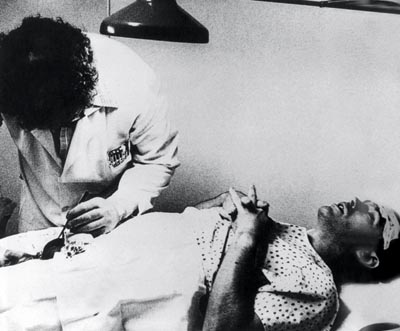

















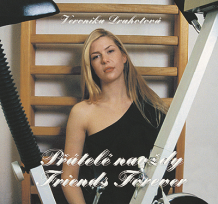




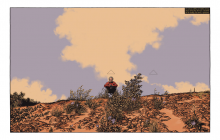
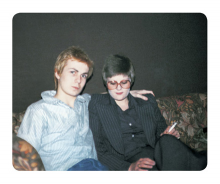
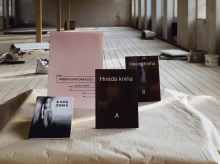
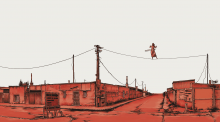


 We Are Rising National Gallery For You! Go to Kyjov by Krásná Lípa no.37.
We Are Rising National Gallery For You! Go to Kyjov by Krásná Lípa no.37.
Kommentar
Der Artikel ist bisher nicht kommentiert wordenNeuen Kommentar einfügen